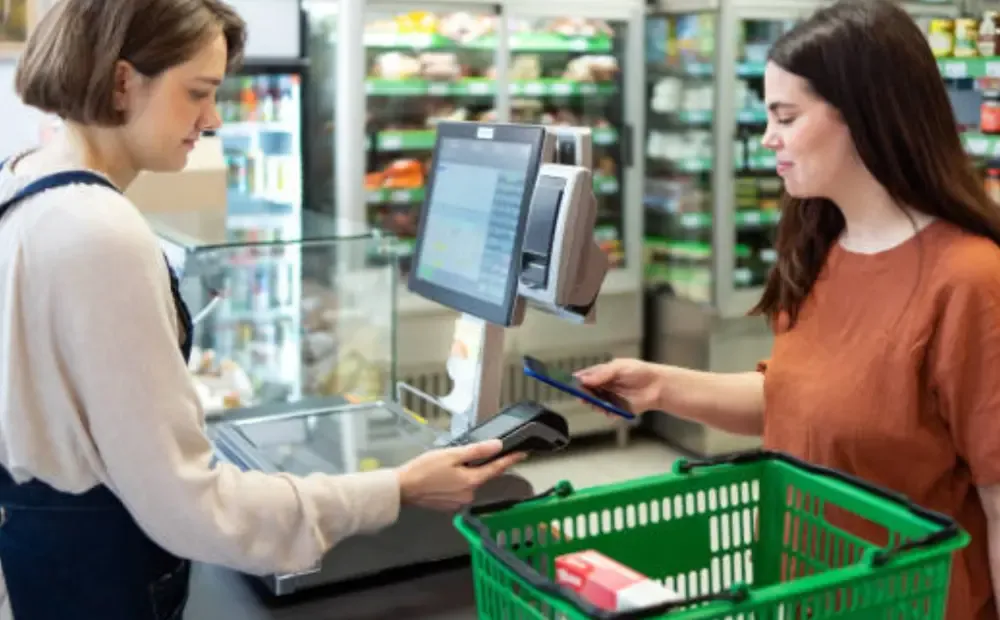How many times have you seen your customers go away because of a slow checkout? A slow line gives your customers the worst experience, and they never come back to your store. If you’re in retail and hospitality businesses, you cannot afford outdated systems at the counter.
Some store owners still rely on a cash register. Others run on a modern POS system. Both process sales, but the difference goes far beyond receipts and cash drawers.
This guide explains what a POS system is, how it compares to a cash register, and why the choice affects efficiency, scalability, and compliance. You will see a technical breakdown, clear comparisons, and business-focused recommendations.
Understanding a POS System for Modern Retail and Hospitality

A Point of Sale system combines hardware and software to process transactions. It also manages operational data in real time for better efficiency.
Unlike a standalone cash register, it connects sales, inventory, and customer records. It also handles compliance tasks within one centralized platform.
A POS can integrate with accounting tools, eCommerce, and loyalty programs. It connects with other systems, making it vital for retail and hospitality.
The Core Hardware Components
The following 5 are the core hardware components of a POS system;
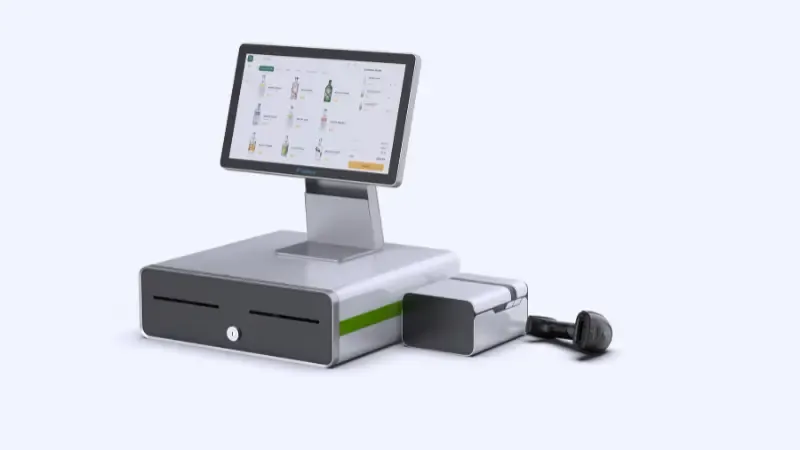
1. POS Terminal
The main interface where transactions are entered and processed. It may be a touchscreen computer or tablet.
2. Barcode Scanner
Reads product codes to speed checkout and reduce manual entry errors.
3. Cash Drawer
Stores physical currency securely and opens only after approved sales.
4. Receipt Printer
Prints purchase records for customers or internal audit purposes.
5. Card Reader/NFC Device
Accepts chip cards, magnetic stripe cards, and contactless payments, including Apple Pay and Google Wallet.
Core Software Functions Of a POS System
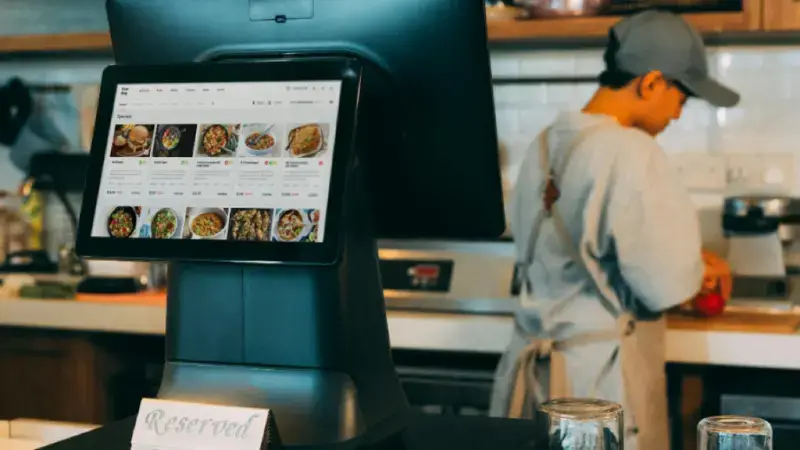
The software of a POS system includes;
- Sales Tracking: Records every transaction with date, time, and item details.
- Inventory Sync: Updates stock levels instantly as sales occur.
- Reporting Dashboards: Shows sales performance, staff productivity, and product trends.
- Tax Automation: Applies correct tax rates and generates compliant reports.
- Employee Permissions: Restricts access based on staff roles.
Main Types of POS Systems
We usually have three main types of POS systems.
- On-Premise POS: Installed on local servers; suited for stable, high-security environments.
- Cloud POS: Accessed online; supports multi-location management and remote monitoring.
- Hybrid POS: Operates offline and syncs data to the cloud when online, ensuring continuity.
What Is a Cash Register in Retail Business Operations
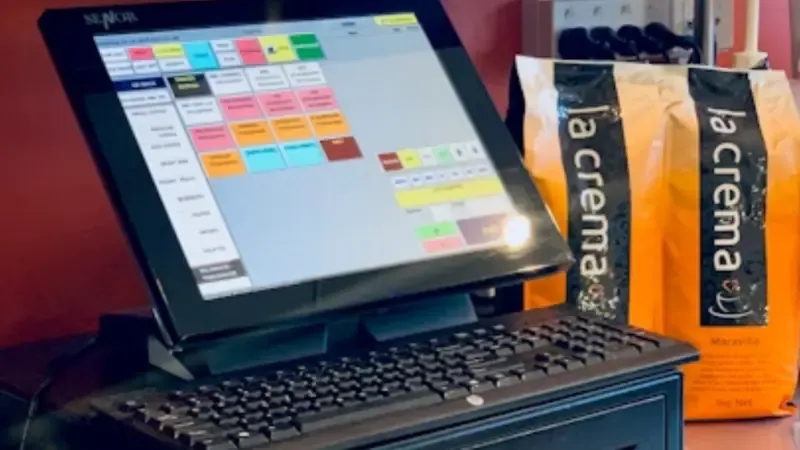
A cash register is a device that records sales and stores cash. It collects payments and prints receipts. Unlike POS systems, it doesn’t track inventory or connect to other tools.
It’s best for businesses that only need basic cash handling.
The Core Hardware Components of a Cash Register
A cash register has the following 4 major hardware components;
1. Cash Drawer
Secure compartment for storing notes, coins, and sometimes checks. Opens only after an approved transaction.
2. Receipt Printer
Generates printed proof of purchase for customers and accounting purposes.
3. Manual Keypad or Basic Touchscreen
Used to enter transaction amounts or select product categories.
4. Integrated Scale (Optional)
Common in grocery and produce stores for weighing and pricing items directly at checkout.
Functional Scope (Where Cash Register is Mostly Used)
- Records sales totals for daily reconciliation.
- Supports basic sales tax calculation.
- Stores transaction history in local memory or printed logs.
- Lacks automated inventory updates, advanced reporting, or CRM functions.
Common Variants Of a Cash Register
- Mechanical Registers: Rare in modern retail, these registers operate purely mechanically with no electronics.
- Electronic Cash Registers (ECRs): Widely used; programmable keys allow faster transaction input and simple category tracking.
POS System vs Cash Register: Technical and Operational Differences
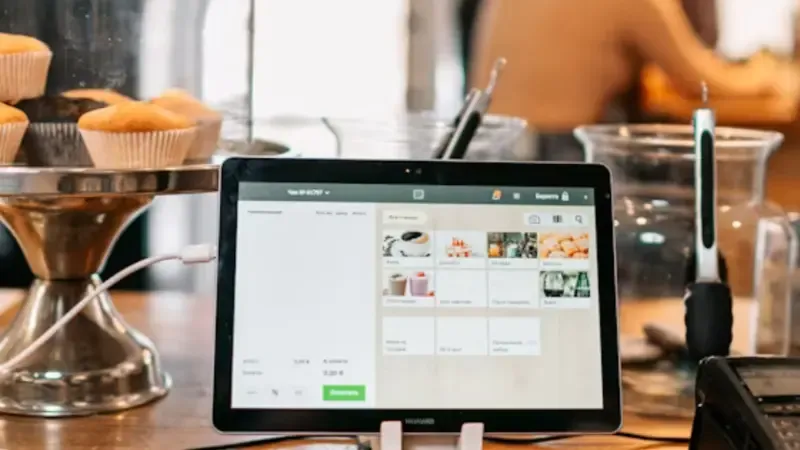
Choosing between a POS system and a cash register impacts more than just the checkout process.
It determines how you handle transactions, manage operations, and plan for growth.
Below is a detailed breakdown of how these systems differ in their core functions and long-term suitability.
Core Functionality Of POS Vs Cash Register
POS System:
Records sales, updates inventory in real time, supports multiple payment methods, and stores customer data for future marketing or loyalty programs.
Cash Register:
Records sales totals, handles cash and card payments, and prints receipts. No inventory updates or customer data tracking.
Technology and Connectivity
POS System:
Uses advanced software, often cloud-based. Supports APIs for connecting with accounting, eCommerce, or ERP systems. Operates online, with offline fallback in some setups.
Cash Register:
Limited to local functions. No API support. Works without the internet, but cannot sync data across locations.
Scalability of POS Vs Cash Register
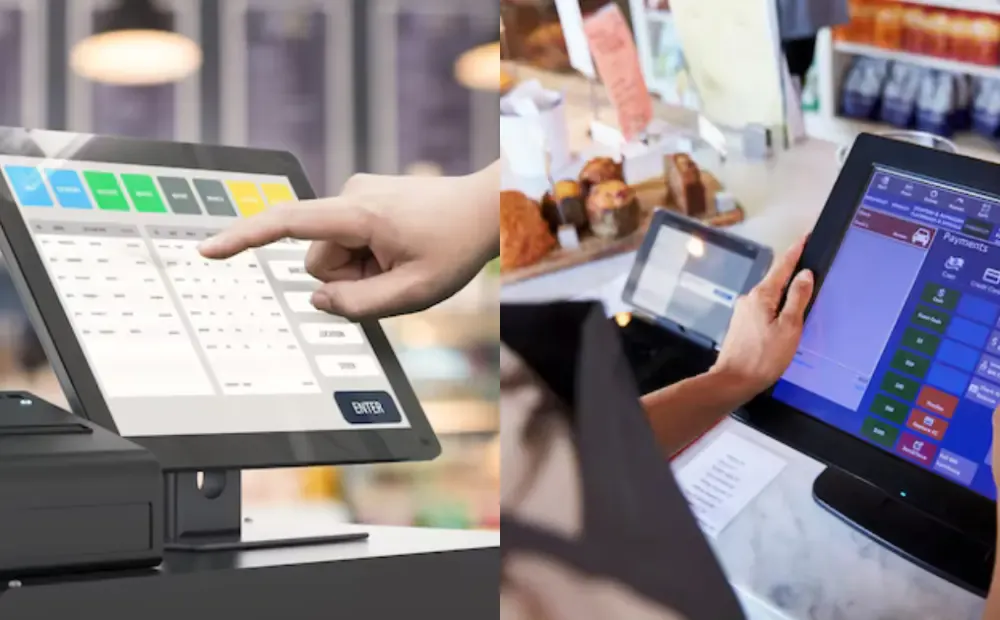
POS System:
Easily adds new terminals and locations…centralized data management for multi-store operations.
Cash Register:
Fixed hardware setup. Each unit operates independently with no shared data.
Compliance and Security
POS System:
Meets PCI DSS standards, encrypts payment data, and automates tax rate application.
Cash Register:
Handles payment processing securely if connected to a card terminal, but lacks built-in encryption or compliance reporting.
Integration Capability
POS System:
Integrates with accounting software, ERP, loyalty platforms, and eCommerce.
Cash Register: No integration with other business systems.
Maintenance and Support
POS System: Software updates provided by the vendor. Remote troubleshooting is possible.
Cash Register: Requires physical repair or part replacement. Limited manufacturer updates.
Cost Structure
POS System: Subscription-based pricing plus hardware costs. Ongoing software fees for support and features.
Cash Register: One-time hardware cost, minimal ongoing expenses unless repairs are needed.
Comparison Table: POS System vs Cash Register
| Feature | POS System | Cash Register |
|---|---|---|
| Core Functionality | Real-time inventory, multi-payment, and customer data | Sales totals, payment handling |
| Technology & Connectivity | Cloud-based, API support, online/offline modes | Local only, no connectivity |
| Scalability | Add terminals/locations easily | Independent units only |
| Compliance & Security | PCI DSS, encryption, tax automation | Basic payment security |
| Integration Capability | Connects with ERP, accounting, loyalty, and eCommerce | None |
| Maintenance & Support | Vendor updates, remote support | Physical repairs only |
| Cost Structure | Subscription + hardware | One-time hardware |
How a POS System Can Streamline Operations and Boost Sales
A modern POS system is a complete business management tool.
It gives you the control and insights you need to grow faster and work smarter. You can easily track your store sales, and it also helps you understand customer behavior.
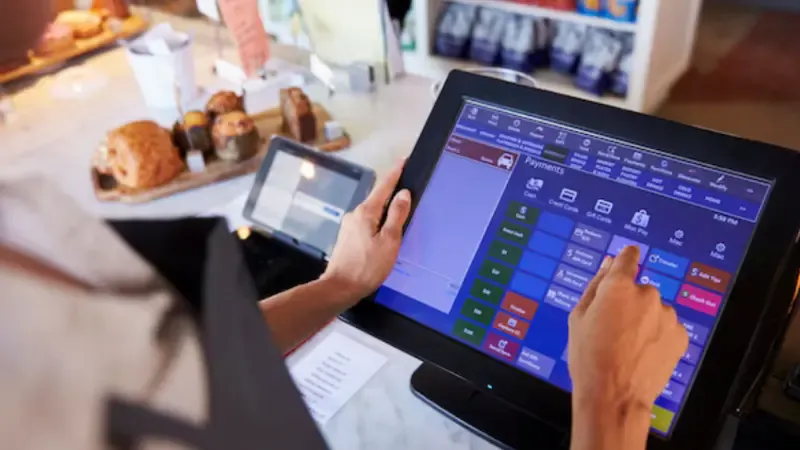
1. Operational Efficiency
A POS speeds up the checkout process, reducing wait times for customers. By automating price calculations and applying promotions instantly it minimizes human error and ensures transactions run smoothly.
2. Real-Time Inventory Control
Stock levels update automatically with each sale, so you always know what’s on hand. Low-stock alerts help you reorder in time, preventing lost sales from out-of-stock products.
3. Advanced Reporting & Analytics
With built-in reporting tools, you can track:
- Category sales trends – see which product lines are performing best.
- Staff performance – measure individual sales contributions.
- Peak sales hours – plan staffing and promotions accordingly.
These insights make it easier to make informed, data-driven business decisions.
4. Omnichannel Support
A good POS integrates with eCommerce sites and mobile ordering systems. This means customers get a consistent experience whether they buy in-store, online, or via an app.
5. Customer Experience Improvements
POS systems allow you to accept multiple payment options, from cash and cards to digital wallets. They can also store customer data for loyalty programs, enabling you to offer personalized discounts and promotions.
6. Regulatory and Compliance Benefits
Digital receipts reduce paper use and make record-keeping simpler. Automated tax calculations and reporting help you stay prepared for audits without extra stress.
When a Cash Register Still Makes Sense
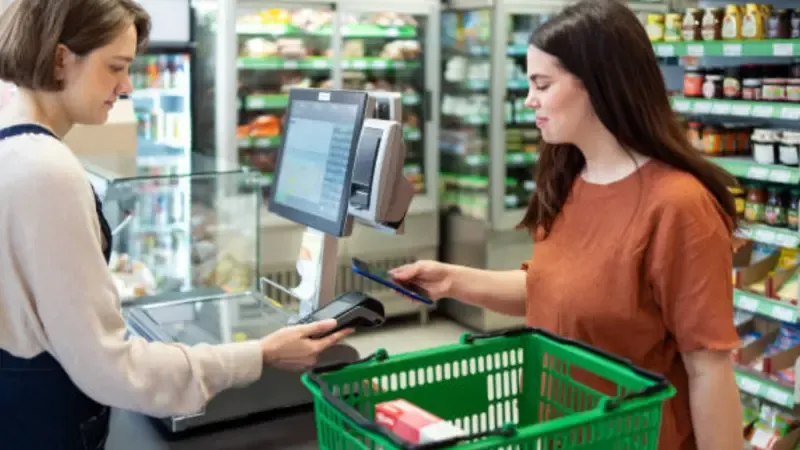
While modern POS systems offer advanced features, a traditional cash register can still be the practical choice in certain situations. It’s about matching the tool to the business model, budget, and operating environment.
Low-Volume, Cash-Heavy Operations
If your business is cash-heavy with low daily sales, a simple cash register may be all you need. This works well for small kiosks, roadside stalls, or rural shops where card payments are uncommon.
Minimal Tech Dependency
In areas with unreliable internet or power, a basic cash register helps avoid downtime from connectivity issues. It’s also ideal for businesses that don’t need advanced inventory tracking or customer data.
Lower Initial Investment
A cash register is generally more affordable upfront than a subscription-based POS system. For seasonal vendors or startups with tight budgets, this can free up capital for inventory or marketing.
How to Decide Between a Cash Register and a POS System
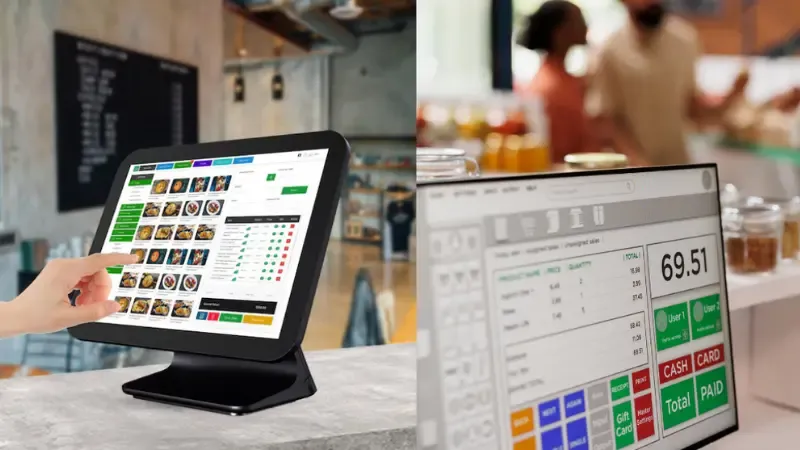
Choosing between a cash register and POS depends on your current operations.
It also depends on where you want your business to be in the future.
Here’s a breakdown of key factors to consider.
Transaction Volume and Payment Mix
If you handle mostly cash and have low daily sales, a cash register works.
If you process high sales, cards, or mobile wallets, a POS is better.
Inventory Complexity
Businesses with a small, fixed range of products can manage with a cash register.
But if you deal with hundreds of SKUs, frequent restocks, or need to track product variants, a POS system’s inventory management tools are essential.
Staff Size and Training Capability
A basic cash register has a minimal learning curve…ideal for small teams or high staff turnover. POS systems require more training, but improve efficiency once your team is comfortable.
Internet Reliability
If your location has unstable internet, a cash register provides uninterrupted service. Some POS systems offer offline modes, but they may have limited functions when offline.
Growth Plans
If you plan to expand to multiple locations, a POS system makes it easier to manage inventory, sales, and staff from a central dashboard.
Cash registers are better suited for single-location businesses with no immediate growth plans.
Top POS Systems and Trusted Cash Registers for 2025
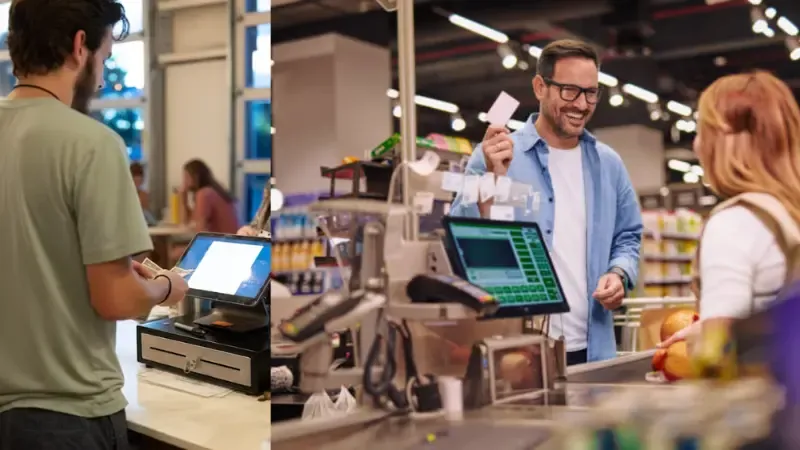
Here’s a clear, business-focused comparison of leading POS options and proven electronic cash registers. Each entry includes real-world specs, pricing, and support details for practical decision-making.
POS Systems
- Square POS
This POS system is best for small or mobile retailers with minimal setup needs.
- Standout Features: Free POS software; simple plug-in hardware; built-in inventory, customer management, and analytics. Offers a new handheld device at $399 with a touchscreen, scanner, and a full-day battery.
- Price Range: No monthly fee. Only transaction charges. In-person rates are 2.6% + 15¢; online rates 2.9% + 30¢.
- Support/Warranty: Manufacturer support included with hardware purchases; integrated ecosystem for maintenance.
- Lightspeed POS
Lightspeed is best for mid-sized retail or hospitality businesses aiming to scale.
- Key Features: It offers advanced inventory tracking, works across both online and offline sales (omnichannel), provides real-time reports, and even has menu tools designed for restaurants.
- Price Range: Starts at $89/month (billed annually) for the Basic plan. Higher-tier plans (Core, Standard) include extras like loyalty programs, eCommerce features, and advanced reporting.
- Support/Warranty: Includes onboarding and 24/7 chat support in the Basic plan.
- Shopify POS
If you own an e-commerce brand and want to expand into physical retail, Shopify POS is best for you.
- Standout Features: Unified inventory and customer profiles across online and offline channels, staff roles, and integrated payments.
- Price Range: POS Pro costs $89/month per location or $79/month annually; free with Shopify Plus.
- Support/Warranty: 24/7 support tied to Shopify subscription plans.
- Toast POS (Restaurant-focused)
Toast POS is best for Independent and growing restaurants.
- Standout Features: Pay-as-you-go starter kit, flat-rate processing, modular add-ons like loyalty, and online ordering.
- Price Range: Starter Kit $0/month; “Point of Sale” plan starts at $69/month; hardware and add-ons range from $494–$1,034.
- Support/Warranty: Vendor support includes hardware and software updates; custom pricing possible for large operations.
Electronic Cash Registers (ECRs)
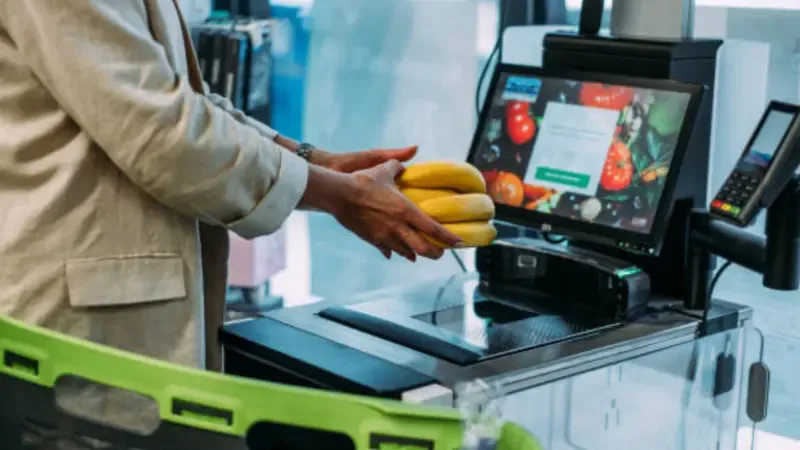
- Casio SE Series
This cash register is best for simple retail or kiosk operations with minimal tech needs.
- Standout Features: Thermal printers, antimicrobial keyboards, backup options like SD slot or memory cassette (models like SE-S400 and SE-C450).
- Price Range: Starting around $299–$329, depending on model.
- Support/Warranty: Standard manufacturer warranty; durable hardware designed for low-maintenance use.
- Sam4s ER Series
Sam4s is best for small retailers needing reliable, entry-level ECRs.
- Standout Features: Thermal printing, flat or raised spill-resistant keyboards, sturdy drawers; models like ER-180U ($265) and ER-945 ($659) offer options for various needs.
- Price Range: From $219 (ER-180U low-cost model) to $660 for advanced variants like ER-945.
- Support/Warranty: Backed by Sam4s guarantees; simple hardware with minimal moving parts.
FAQs About POS Systems Vs Cash Registers
What new payment methods can POS systems support?
Modern POS systems support tap-to-pay, mobile wallets, and even SoftPOS (payments through a smartphone app). They’re more flexible and useful than old-style cash registers.
How do POS systems help reduce shrinkage or losses?
They keep track of every item sold and match sales with stock levels. This makes it easier to spot mistakes or missing items, helping reduce losses and improve inventory accuracy.
Can POS systems operate without the internet?
Many POS systems offer offline modes. They store transactions locally and automatically sync data when the connection returns, avoiding interruptions during outages.
Which POS software offers a free plan for starters?
Square and Toast offer starter POS software with no monthly fees. Small businesses can get started for free and just pay transaction fees.
Is a cash register still legal for proof of sale?
Yes. Cash registers remain legal for transaction recording and can meet tax and compliance recording requirements in many regions, though they offer limited digital tracking.
What’s SoftPOS, and why is it useful?
SoftPOS turns any smartphone or tablet into a secure payment terminal via an app. No extra hardware needed, offering flexibility and reduced cost for mobile or low-budget operations.
Final Take: Ready to Choose the System That Fits Your Vision?
Your checkout setup is the backbone of your retail efficiency and scalability. The wrong choice costs you time, accuracy, and growth. The right choice pays you back every day.
Want to cut through the noise and find the system that matches your vision?
Book a call with us today for hands-on vendor comparisons, live demos, and industry-specific insights that make your decision simple.

